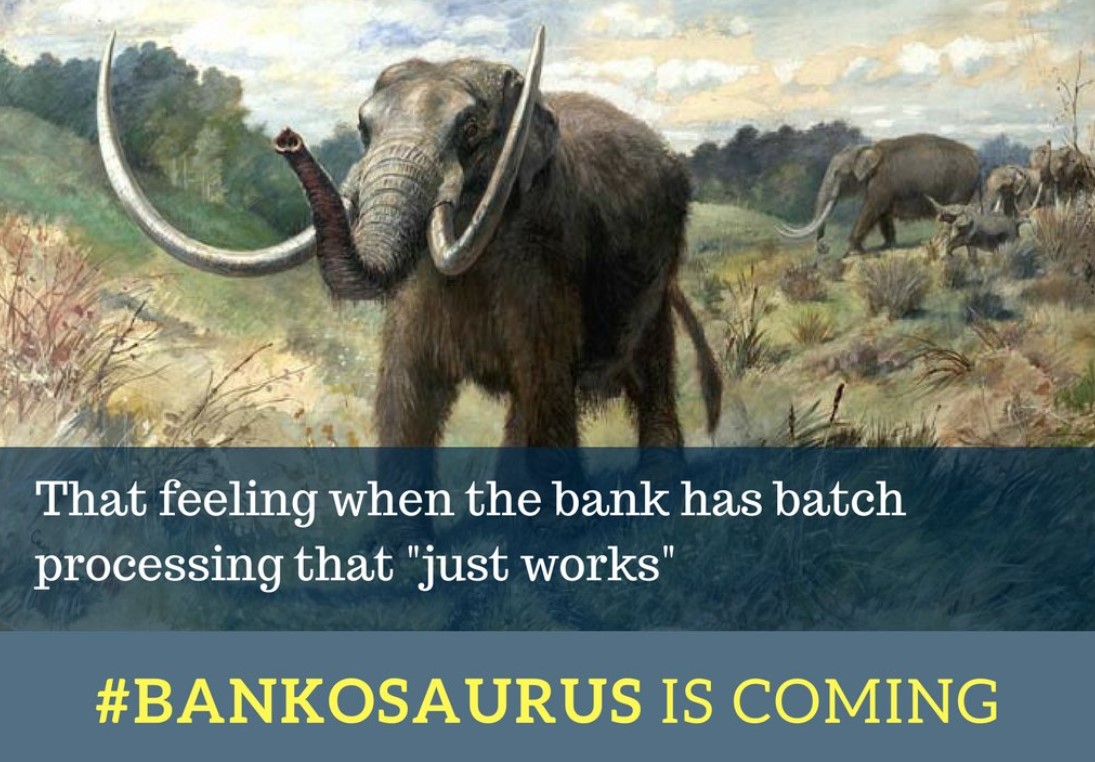
There are regular forecasts of the end of banking as we know it …
I disagree with most of them, because banks are a utility with a stranglehold on core deposit services that, tbh, does not need breaking. Having said that, banking has been thrown to the four winds by technology from BNPL to P2P payments. The deposit side is still safe. The day-to-day use of money is what has changed.
So I was quite interested to receive a report from the Italian Mediobanca company. Mediobanca are a merchant bank who also launched a digital bank, Che!, back in 2008. They’re an interesting bank. I’m sharing their report here in that they talk directly to my accusations of traditional banks being Bankenstein monsters and Jurassic Banks.
Bankosaurus jumping on the asteroid: Debunking the bank-dinosaur vs tech-asteroid myth
The rise of new technologies and of Big Tech/fintech companies based on them has been juxtaposed to incumbent, slow-moving banks so far that the oversimplified metaphor of the bank-dinosaur at risk of extinction from the tech-asteroid has been widely utilised by mainstream media. It is all about chasing the evergreen popularity of the David vs Goliath duel. This report provides elements confirming the threat is there, but that the Bankosaurus could still evolve by embracing technology, gaining agility to jump on the asteroid and, in so doing, buying the ticket for the perpetuation of the species.
Disruptive technologies: DLT, MLAI and quantum; embrace to evolve
We identified machine learning/artificial intelligence (MLAI), distributed ledger technology (DLT, aka blockchain) and quantum computing (QC) as 3 innovations which could disrupt the banking model (among many others) as we know it.
MB surveys: banks know they must change, they just do not know how to… yet
We engaged EU banks with 2 surveys to position them on the transformation journey: 1) gauging where they stand on MLAI, DLT, QC, 2) showcasing of use cases.
With c.20 respondents, we draw some conclusions:
- a) the majority of investment is going into low-key AI/chatbots,
- b) short inception-to-production, high external staff reliance and efficiency-focus either reflect good project management or room to move up along the innovation vector,
- c) low DLT penetration embodies aversion to cooperation with peers and the need to fully control investments,
- d) absence of payment projects echoes the exit from the space, a long-term strategic mistake to us, while quasi-absence of QC is justified; it is just too early for it. Banks know they must change at some point; they are just not daring/worried enough and mounting external pressure could help them.
MB methodology: three steps to find the cure –
Step 1: breaking the bank
We have gone into our lab to find a 3-step cure for the endangered species. EU banks adopt a vertically integrated model mixing very different businesses and the first step is to ringfence the affected organs. We separated standardised banking – businesses more exposed to technological disruption – from customised banking – which is more immune – of the 12 most representative EU banks (30% market share). This shows 2/3 of operating income, 60% of costs and 50% of loans belong to standardised banking, under threat from technological disruption.
Step 2: digital disruption eroding 30% of standardised revenues
We looked at sectors already disrupted by tech: film rental, photography, local taxis and retail bookstores. Anecdotal evidence points to 30-50% margin erosion. We simulate a central case made of c.30% compression of standardised banking revenues, requiring c.60% cost cuts to hold profitability steady or C/I going from c.50% to <30%, better than best-in-class Nordic banks.
Step 3: the great (cost) reset
We developed the DLT cost function, validated by Spunta’s case, featuring fixed costs progressively handing over to variable transaction costs as volumes pickup.
Slimmed-up banks can jump on the asteroid
We simulated the migration of EU standardised banking onto a single, hypothetical DLT platform maximising scale economies. Our simulation indicates a collapse in aggregate cost, where MLAI and QC would also contribute, protecting sector profitability. Our new, DLT based cost estimate shows a margin of error of c.400x, still leaving banks on current profitability, even after revenue attrition from digital disruption. Hence, cost miniaturisation is the evolution banks need to not only avoid extinction, but potentially to thrive on higher profitability.
Read the full report here:
Chris M Skinner
Chris Skinner is best known as an independent commentator on the financial markets through his blog, TheFinanser.com, as author of the bestselling book Digital Bank, and Chair of the European networking forum the Financial Services Club. He has been voted one of the most influential people in banking by The Financial Brand (as well as one of the best blogs), a FinTech Titan (Next Bank), one of the Fintech Leaders you need to follow (City AM, Deluxe and Jax Finance), as well as one of the Top 40 most influential people in financial technology by the Wall Street Journal's Financial News. To learn more click here...

